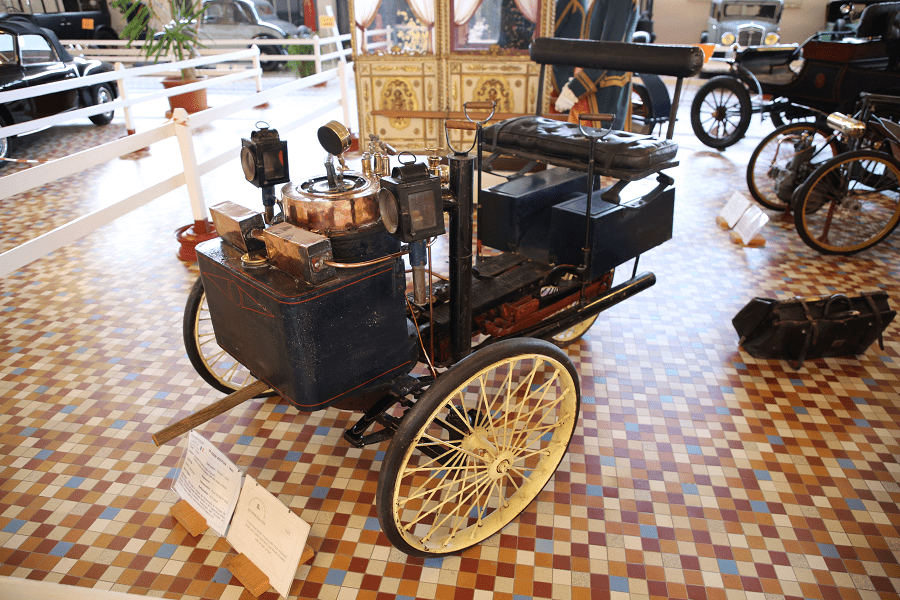De Dion-Bouton Steam Tricycle. This exhibit refers to 1885. Max. speed: 17 km/h
The De Dion-Bouton tricycle was the most successful motor vehicle in Europe from 1897 until 1901. With about 15,000 copies sold, the de-Dion-Bouton motor tricycle scored the first breakthrough for the distribution of motor vehicles. In particular the fast-running de Dion-Bouton engine set new standards for vehicular motors, and is regarded as the precursor of all motorcycle engines.
Jules-Albert de Dion, the engineer of Georges Bouton and his brother-in-law Charles-Armand Trépardoux, founded a workshop in 1882 near Paris. The first project was the production of steam boilers, then a fairly successful steam-powered tricycle from 1887, which should have already reached a speed of 65 km/h.
Trépardoux, who wished to continue the further development of steam engines, resigned from the company in 1893; De Dion and Bouton opted for the development of gasoline engines after they viewed Daimler’s engines at the Paris Exposition of 1889.
The De Dion-Bouton motor tricycle went into production in 1897 weighing just under 80 kg, with an output of 1.5 HP at 1,800 RPM from its 211 cc motor, although the engine had already been established in a prototype tricycle in 1895.
The tricycle with track width of 92 cm was chosen, because according to Dion and Bouton “a bike appeared too fragile for this purpose.” The drive was achieved via a pair of gears from the motor directly to the rear axle. A differential balanced the different curve radii. The relatively high purchase price amounted to 1000 to 1500 gold marks.
The motor tricycle remained in continuous production for almost ten years. The last model (1904) increased the engine capacity and performance with a 955 cc displacement engine (bore 100 mm, stroke 120 mm) producing 8 HP at 1,800 RPM.
On April 13, 1902, the French racer Georges Osmont set a speed record of 109.1 km/h in Nice with a De Dion-Bouton motor tricycle.












